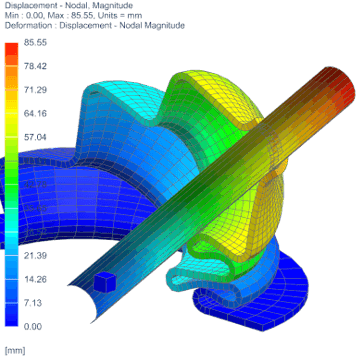Free Resources
- ABOUT
- SERVICES
Design
Analysis
Test
- Software
Siemens Digital Industries Software
Technical Support Hotline
ATA Software
Software We Use
Process Improvement
- Industries
- PORTFOLIO
- Careers
- CONTACT
- PROJECT INQUIRY
See how to extend your linear models to account for contact, nonlinear materials, and large deformations with Simcenter Nastran Multistep Nonlinear solutions.
Simcenter Nastran Multistep Nonlinear Solutions 401 and 402 allow you to leverage implicit nonlinear methods to analyze models that include contact; material nonlinearities such as plasticity, hyperelasticity, and creep; and geometric nonlinearities such as large deformations and strain with subcase chaining. These solutions were introduced to replace the legacy SOL 601 Advanced Nonlinear solver and have seen a number of exciting enhancements in recent releases. SOL 401 is implemented in the standard Simcenter Nastran architecture, whereas SOL 402 integrates capabilities from the highly regarded LMS Samtech Samcef solver into Simcenter Nastran. Both solutions feature robust algorithms and are easy to adopt due to their similarity to linear Simcenter Nastran solutions and support from common pre/postprocessors like Femap and Simcenter 3D.

This on-demand webinar describes the basics of nonlinear analysis and demonstrate how to set up a basic plasticity analysis in SOL 401.
Topics:

Senior Project Engineer, ATA Engineering, Inc.
DOWNLOAD Slides